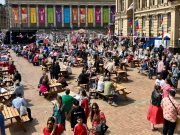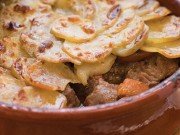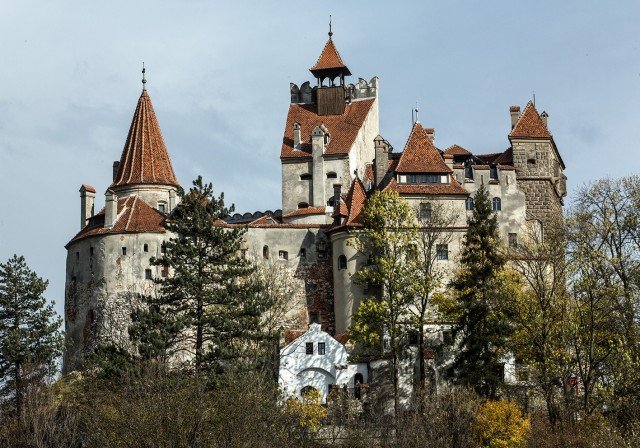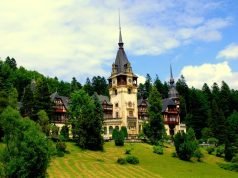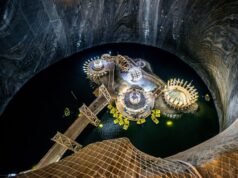We Draculs have a right to be proud… I am the last of my kind ” – Dracula, from Bram Stoker’s Dracula
Some say that Transylvania sits on one of Earth’s strongest magnetic fields and its people have extra-sensory perception. Vampires are believed to hang around crossroads on St. George’s Day, April 23, and the eve of St. Andrew, November 29. The area is also home to Bram Stoker’s Dracula, and it’s easy to get caught up in the tale while driving along winding roads through dense, dark, ancient forests and over mountain passes.
Tales of the supernatural had been circulating in Romanian folklore for centuries when Irish writer Bram Stoker picked up the thread and spun it into a golden tale of ghoulishness that has never been out of print since its first publication in 1897. To research his immortal tale, Stoker immersed himself in the history, lore and legends of Transylvania, which he called a “whirlpool for the imagination.”
Count Dracula, a fictional character in the Dracula novel, was inspired by one of the best-known figures of Romanian history, Vlad Dracula, nicknamed Vlad Tepes (Vlad the Impaler), who was the ruler of Walachia at various times from 1456-1462. Born in 1431 in Sighisoara, he resided all his adult life in Walachia, except for periods of imprisonment at Pest and Visegrad (in Hungary).
Bram Stoker’s inspiration
Vlad Tepes was born in 1428 in the fortress city of Sighisoara. His father, Vlad Dacul, was the military governor of Transylvania and had become a member of the Order of the Dragon a year before. The Order, similar to the Order of the Teutonic Knights, was a semi-military and religious organization established in 1387 in Rome in order to promote Catholic interests and crusades.
The Order is relevant for the legend, mainly because it explains the name of Dracula.
For his deeds, the Order of the Dragon was bestowed upon him, hence the title Dracul (the Latin word for dragon is draco). While in medieval lure dragons served as symbols of independence, leadership, strength and wisdom, the biblical association of the devil with the serpent that tempted Adam and Eve gave the snake-like dragon connotations of evil. Thus, the Romanian word Dracul stands in English for both dragon and devil.
Dracula, the title of Vlad Tepes,translates as Son of Dracul.
Moreover, the ceremonial uniform of the Order – black cloak over red accouterment – was Bram Stocker’ source of inspiration for Count Dracula’s look.
But how did Bram Stoker’s story turn into a myth? A partial explanation is provided by the circumstances under which the book was written and received. A genuine epidemic of “vampirism” had hit Eastern Europe at the end of the 17th century and continued throughout the 18th century. The number of reported cases soared dramatically, especially in the Balkans. Then, the epidemic traveled west to Germany, Italy, France, England and Spain. Travelers returning from the East would tell stories about the undead, which helped keep the interest in vampires alive. Western philosophers and artists tackled the issue ever more often. Bram Stoker’s novel came as the pinnacle of a long series of works based on tales coming from the East. Back then, most readers were certain that the novel had been inspired by real facts and that its story was perhaps just a bit romanticized.
Tracking Dracula
Although he never traveled to Romania, Stoker crammed his book with descriptions of many real locations that can still be visited in present-day Romania. They include Sighisoara the most important historical places associated with Vlad Tepes, such as the 14th century town of Sighisoara where you can visit the house in which Vlad was born (now hosting a restaurant and a small museum of medieval weapons).
Other Dracula sites include: the Old Princely Court (Palatul Curtea Veche) in Bucharest, Snagov Monastery, where, according to legend, Vlad’s remains were buried; the ruins of the Poenari Fortress (considered to be the authentic Dracula’s Castle); the village of Arefu where Dracula legends are still told, the city of Brasov where Vlad led raids against the Saxons merchants, and, of course, Bran Castle.
Some tours also cover the folkloric aspects of the fictional Dracula. For instance, visitors can eat the exact meal Jonathan Harker ate at The Golden Crown in Bistrita and sleep at Castle Dracula Hotel, built no so long ago on the Borgo Pass at the approximate site of the fictional Count’s castle.




